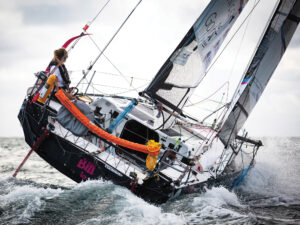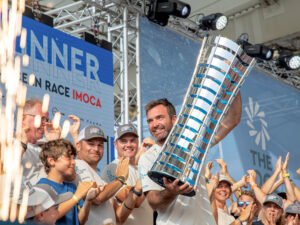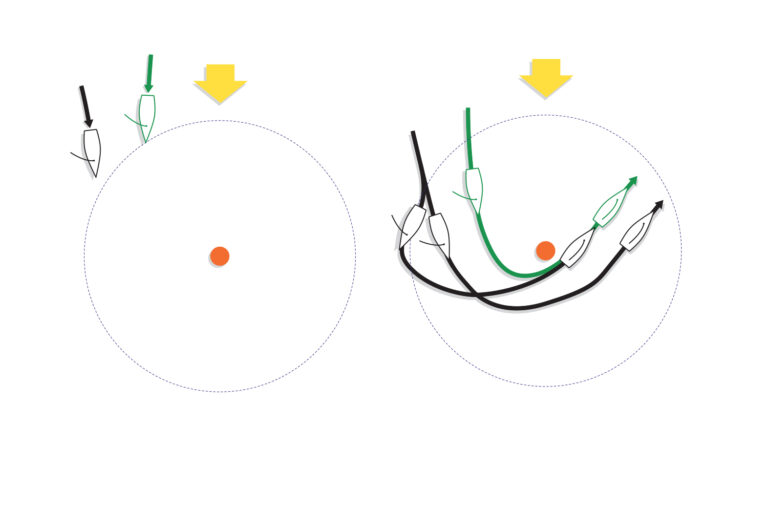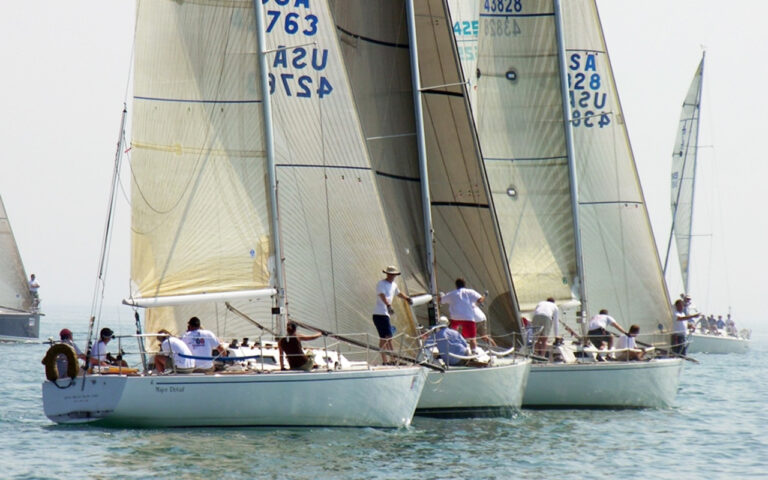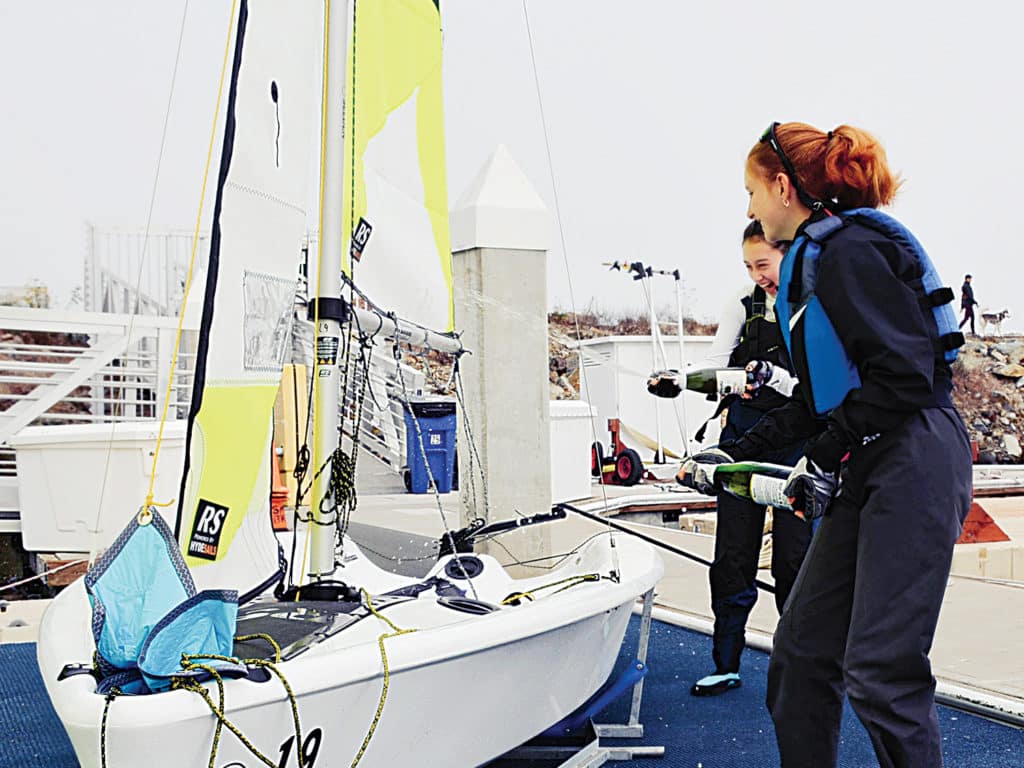
“Transformational” is only a word—unless it sticks. Tom Siebel wouldn’t aim lower. He’s had a great run in tech, lately in artificial intelligence, and he’s out to make a difference. Typical of tech-sector folks, Siebel is fond of another word: disruption. Here’s a guy who has sailed all his life, raced MOD70 trimarans, campaigned a J Class yacht, raced whatever because “sailing is magical,” and now, in partnership with US Sailing, he’s launched a nationwide initiative funding quality boats and quality coaching for community sailing venues: the Siebel Sailors Program. Two more words—opportunity and diversity—are also in play. Familiar words. Some people hear them too often, to no effect. What we haven’t seen before is what is on tap now—well-funded levels of resource and support. Maybe, just maybe, this has legs.
As skies warm and the season kicks off, there will be networks operating around five regional centers, including the Columbia Sailing School in Chicago and DC Sail in Washington, D.C. Two more are in the lineup, South-Central Florida and the Pacific Northwest. The Siebel Sailors Program soft-launched this past fall on San Francisco Bay, where three fleets of new RS Fevas took to the water, and young Anna Novolt, drying off from her first sail, was inspired to declare, “I don’t know when I’ve been more excited about a boat.”
And for once, the boat is key—but there’s much, much more.
Twenty-one years ago, Carisa Harris Adamson founded the Treasure Island Sailing Center, where she and Siebel recently presided over the ceremonial launch of the Siebel Sailors Program. Adamson has nurtured her baby against long odds. In welcoming Siebel as a bolt from heaven, she noted that community sailing efforts “have done the job of growing the base, but we have difficulties keeping kids.” In particular, programs lose tweens when they outgrow their singlehanded trainers and perhaps have the skills for a big-kid boat, but they’re too scrawny to right the boat from a capsize. Then they struggle, or disappear. Not only in community sailing.
The junior program at my yacht club, St. Francis, has stumbled over this for years. And I’m careful in what I’m about to say, because the longer someone has been in youth sailing, the more likely they are to growl if you suggest a new type of boat. But the Feva—a doublehander with an asymmetric spinnaker for apparent-wind sailing—is going to matter. Scrawny kids can right it from capsize. If that was their only special quality, it would be enough, but Fevas are also a fast, 21st-century answer to how to hold a kid’s attention. Fevas are already big in Europe and growing in the United States. Siebel is taking them national, targeting that vulnerable middle school age, and I’m a believer. More on the boats later.
The Siebel program developed through brainstorming with leadership at US Sailing. How can it make a difference? Today, the manager for the national initiative is Blair Overman, and coming from a community sailing background herself, she says: “It’s not as though Siebel Sailors will be teaching anything drastically different. Rather, we’re intentionally hiring high-level people to work with kids who may not have had high-level teachers before. Beginners at sailing centers sometimes get the least of the instructors, but our beginners are going to get the best.” Think less chalk talk and more engagement; some coaching to win but a lot of adventure sailing.
“Each region is different,” Overman says. “They have different paths, but the goals are the same: to appeal to more kids, and more kinds of kids, and to keep them coming back and to connect with their families. That won’t come easily. There’s no formula. We’re attuned to training instructors in how to interact with people who are different from them. This is not just about sailing. It’s about recognizing that a kid who shows up lethargic and cranky maybe hasn’t had a meal all day, and until that kid is fueled up, there’s no use trying to teach.”
Programs lose tweens when they outgrow their singlehanded trainers and perhaps have the skills for a big-kid boat, but they’re too scrawny to right the boat from a capsize.
Situations of that sort are sure to arise, because one of the conditions for a program to be accepted is a promise that at least 50 percent of participants will come from disadvantaged neighborhoods. “Stacey and I invest in new things,” Siebel says. “We don’t give to the opera. We try to create, so what we’re doing in creating the Siebel Sailors Program is consistent with the giving we’ve done before.”
For example: A Siebel-funded campaign educating adolescents about the ugly realities of methamphetamine use ran in eight states and dramatically reduced methamphetamine usage. “It wasn’t about scaring kids straight,” Siebel says. “It was about teaching the consequences of meth as a consumer product, what it does to your body, your life, your looks. Methamphetamine rates in Montana dropped 70 percent.”
Siebel-funded stem-cell research has produced its own dramatic results in cure rates for specific cancers, so why not take a shot at a Tom Siebel obsession, the transformative power of time on the water under sail? “You want to know that it can scale,” Siebel says. “We bought 125 boats for five hubs in the first year. In 2020, we want to double down with another five hubs and another 125 boats. And my hope is that in 10 years, this will be transformative nationally. I started sailing on Lake Michigan with my dad when I was 8. When I was a teenager, the other kids and I would look for a buster so we could go out in a gale and get our teeth kicked in—the teamwork, the terror, the joy…yes, nothing short of magical.”
At the Columbia Sailing School, Kurt Thomsen sees the Siebel program as fitting right in. “We have STEM teaching, but it’s always been a problem getting scholarship money to bring in the kids, and we’re hoping this means we can expose more of them, and then pay attention to the kids who take to it. Last year, we had 600 in our field-trip program, and we were able to get them sailing maybe one time. Now we can do more, and for a lot of kids, the Feva is the perfect stepping stone.”
RELATED: So, the Kid Wants to Teach Sailing
Brian McNally, at DC Sailing says: “I can’t overstress how grateful we are to be able to engage kids we’d otherwise have missed. We’ve had just 20 FJs for all our adult and kid programs, including 10-week spring and fall high school sailing for 30 schools—the entire tristate area. With Fevas we can teach advanced skills, and yes, it matters to have top-level coaching.”
The format is to equip each Primary Center with Fevas and to equip each Supporting Center with Fevas for adventure sailing, also for racing as opportunity presents. Chris Childers is the Siebel coach for San Francisco Bay, with TISC as the hub and Alameda Community Sailing Center (in the East Bay) and Golden Gate Sailing Foundation (in the West Bay, at Golden Gate YC) in support. Childers believes that “Fevas are the perfect boat to start kids in doublehanded sailing at an age when they’re very social and want to be with other kids. They can begin doublehanded sailing earlier than they would in a boat like an FJ. We can do more to develop them going forward. Imagine the cohort of sailors 20 years from now who have been doing apparent-wind sailing their whole lives.”
The chair of the junior program at an establishment not far from Golden Gate YC, also party to the conversation, was heard to mutter something like: “Apparent-wind sailing? Trainer for the 29er? That’s exactly why we’re getting Fevas for ourselves. Bring it on.”

